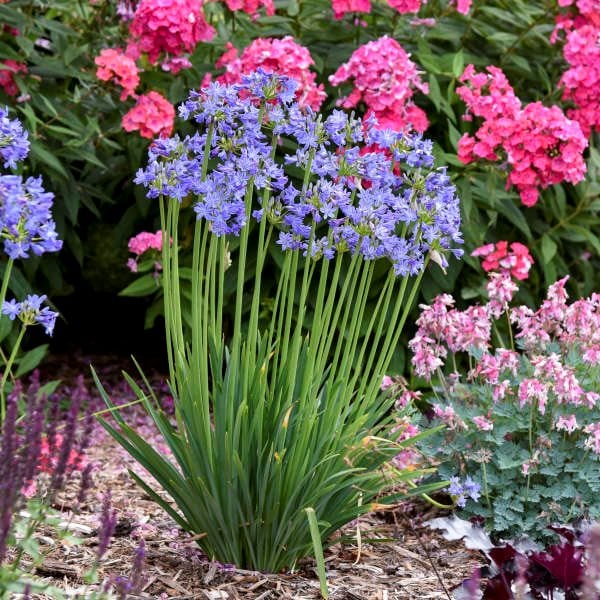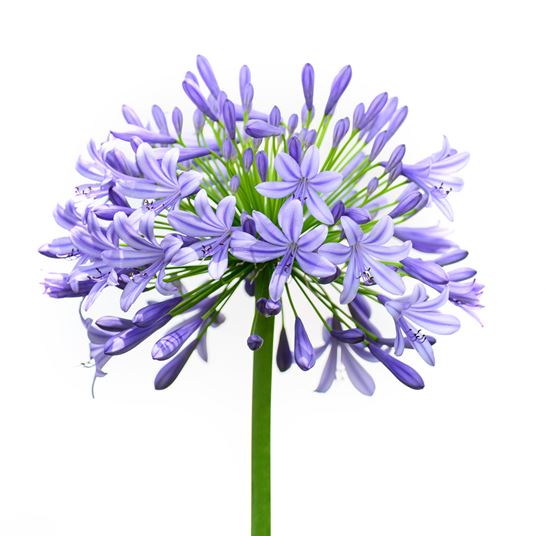Mastering the Art of Agapanthus Treatment: Essential Steps for Healthy And Balanced Development and Vivid Flowers
In the realm of cultivation, the growing of agapanthus stands as a satisfying undertaking for those who seek to nurture these elegant flowering plants. With their striking flowers and elegant foliage, agapanthus has recorded the attention of gardeners worldwide. Nevertheless, achieving optimal development and dynamic blossoms calls for a nuanced strategy that encompasses numerous necessary actions. From selecting the ideal range to mastering trimming strategies, the trip in the direction of growing growing agapanthus plants is multifaceted and holds the crucial to opening the complete possibility of these organic gems.

Choosing the Right Agapanthus Variety

When choosing the ideal Agapanthus variety for your garden, think about aspects such as climate suitability, blossom color, and development behavior. Additionally, think about the climate in your area to make certain the Agapanthus variety you select can grow in your certain conditions. Recognizing the growth behavior of various Agapanthus selections is vital for proper placement within your yard.
Ideal Growing Conditions
Thinking about the optimum environmental requirements is crucial for successful Agapanthus cultivation. Agapanthus prospers in well-draining soil with a slightly acidic to neutral pH level. When growing, choose an area that receives complete sunlight to partial color. In hotter climates, offering some afternoon shade can stop scorching of the leaves. Agapanthus plants are delicate to cool temperature levels and ought to be secured from frost during winter season.
To guarantee healthy development and vibrant blooms, plant Agapanthus bulbs at a depth of regarding 2-4 inches and room them 8-12 inches apart. Including organic issue, such as garden compost, to the dirt can improve water drainage and fertility, promoting robust origin advancement. Mulching around the base of the plants assists maintain dampness and subdues weed development. Normal watering is critical, especially during the growing season, to keep the soil continually damp but not soaked.
Watering and Feeding Tips
Preserving correct moisture degrees and providing necessary nutrients are key aspects in the treatment regimen for Agapanthus plants. When it comes to sprinkling Agapanthus, it is essential to strike an equilibrium. These plants favor continually moist soil but are prone to root rot if overwatered.
Feeding Agapanthus is essential for promoting healthy and balanced development and respected flowers. Apply a balanced fertilizer, such as a 10-10-10 formula, in the early springtime as new growth emerges. Repeat this application every 6-8 weeks throughout the growing season. Stay clear of excessive fertilization, as it can result in lavish foliage at the cost of blossoms. Constantly follow the maker's directions for correct dilution and application approaches. By following these watering and fertilizing ideas, you can ensure your Agapanthus plants prosper and generate vibrant, long-lasting flowers.
Pruning Techniques for Agapanthus
Trimming Agapanthus plants at the appropriate times and with appropriate strategies is crucial for maintaining their health and wellness and advertising optimal development and blooming. The ideal time to trim Agapanthus remains in late wintertime or very early springtime before new growth emerges. Begin by getting rid of any kind of yellowing or dead leaves near the base of the plant. Cut them as short as feasible without harming the arising shoots.
Deadheading invested blossoms can additionally redirect the plant's power right into producing even more blooms instead than setting seeds. If you want to collect seeds for proliferation, leave some blossoms to fully grown and completely dry on the plant.
Remember to make use of tidy, sharp devices to make specific cuts and decrease the risk of More about the author presenting illness. Agapanthus. Normal trimming will certainly help maintain your Agapanthus looking healthy and balanced and neat while making certain an abundant screen of beautiful blossoms
Taking Care Of Common Pests and Diseases
After making certain appropriate pruning techniques for Agapanthus, it is vital to attend to usual bugs and conditions that can impact find more the health and wellness and vigor of these plants. Agapanthus plants are generally sturdy however can still succumb specific problems. One usual pest that influences Agapanthus is the Agapanthus gall midget. This little, orange fly lays its eggs in the vegetation, leading to distorted growth and flower buds that stop working to open. To fight this bug, trim and destroy any affected plant components and think about utilizing insecticidal soap.
Furthermore, Agapanthus plants can experience from root rot if they are grown in Recommended Site poorly draining pipes dirt. By being attentive and taking prompt activity against illness and pests, you can help your Agapanthus plants thrive and produce dynamic blossoms. Agapanthus.

Verdict
In conclusion, understanding the art of agapanthus care involves choosing the ideal range, offering suitable planting conditions, proper watering and fertilizing, proper pruning techniques, and attending to usual parasites and conditions. By adhering to these necessary actions, you can make sure healthy and balanced development and vivid blossoms for your agapanthus plants. Remember to consistently check and preserve your plants to promote their total wellness and longevity.
To guarantee healthy and balanced growth and vivid flowers, plant Agapanthus bulbs at a depth of regarding 2-4 inches and room them 8-12 inches apart. By following these watering and fertilizing pointers, you can ensure your Agapanthus plants grow and create lively, resilient flowers.
One typical insect that influences Agapanthus is the Agapanthus gall midge. Furthermore, Agapanthus plants can experience from root rot if they are grown in badly draining pipes dirt. By adhering to these crucial actions, you can guarantee healthy and balanced development and vivid blossoms for your agapanthus plants.